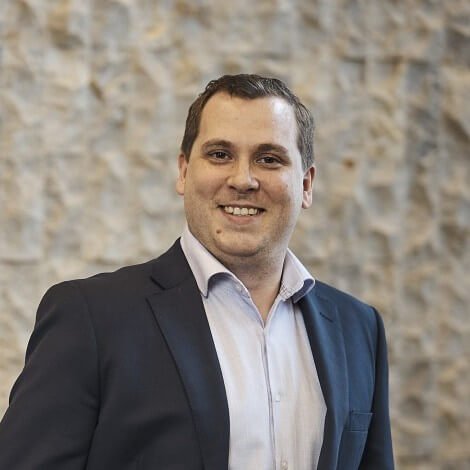Coates Hire’s CIO Ben Waterhouse joined the thought leadership at ADAPT’s CIO Edge. He sat down with our Senior Research Strategist Aparna Sundararajan to give his thoughts on the difference between shadow IT and business-led IT. They also discuss building cross-functional teams and how to engage C-level executives on business priorities.
Aparna Sundararajan:
Let’s talk about a few things that resonate with you and you spoke about Shadow IT, and you’ve been attending some of the sessions. So, what is your thought on that?
Ben Waterhouse:
Yeah, I mean I was just saying, I went to reach the round table downstairs, and I think it was, I’m trying to remember the topic now, I think it was about the new way, or the new enterprise, leading in the new enterprise. And, you know, the topic of Shadow IT came up, which I just find fascinating because I think Shadow IT has such a negative connotation.
And why does it happen? I think in a lot of cases because traditional IT teams aren’t actually delivering what the organisation wants, right? If you’re delivering what the organisation wants then they’re not going to go off and do their own thing.
So, you know, the thing that I’m challenging my team on at the moment is, how can we embrace that? How can we work out how to harness that potential within the organisation? Work out what problems they’re trying to solve and then actually help them.
And it dovetails really nicely into a topic that is a very passion of mine which is this concept of business lead IT.
We, maybe, 18 months ago now changed our delivery model and moved to an agile delivery model, in particular, SCRUM methodology. But to try and demonstrate to the business what’s in it for them, why should we change? We used it to demonstrate that we can iteratively add value. Right?
And we took business leaders, senior leaders from the business, and built product teams around them.”
Aparna Sundararajan:
This would include Chief of Marketing, Operations, different business functions?
Ben Waterhouse:
Exactly right. So generally it was two down from the CEO. So, that kind of senior leadership level. You know, they were responsible for various different areas within the organisation. We took them and said, “We’re going to build a product team around you, and you’re actually responsible for prioritising what that team does.”
Aparna Sundararajan:
Oh, so you’ve built a cross-functional product team in that way?
Ben Waterhouse:
Yeah, pretty much. And we took it one step further and we said, “We actually want you to own the product.” So when it’s time to release, and we try and release something every month because, again, that iterative add-value to the organisation. When it comes time to release, it’s not IT communicating that we’re releasing this new feature or we’re releasing this new mobile app. It’s actually the business owner. It’s that senior leader from the organisation, recognised personality within the organisation, known for being responsible for maintenance and service, or whatever it might be, that’s saying, “Hey, we’ve got this new functionality, we’re releasing it to the organisation.”
So it made it really personable and it helped kind of build this bridge between the organisation and IT, rather than an “IT doesn’t deliver” it’s like, “Hey, actually, there’s this unison happening and it’s working really well!”

Aparna Sundararajan:
This is very interesting because hearing it, we rarely hear it from an IT person saying that the way you’ve shifted the dial within IT is, in a way, and going back to the business and asking them that. This is how we’re doing things, and this is how it’s going to help you, and let’s prioritise as to what business outcomes you want. And that’s very ideal because that’s what we’ve been advising other C-level executives to do.
So do you find any roadblocks right now that in terms of how you engage with them?
Ben Waterhouse:
Yeah, look. I, by no means profess that we’ve got a perfect, we’ve got some really good product teams that are just humming along. And they’re highly adopted technologies within the organisations. What we also see is, when this works, the end-users within the organisation adopt the technology quicker.
But we’ve got other areas that we haven’t managed to set up perfectly yet. And sometimes that comes down to helping the organisation or helping that business leader, define the backlog or what they need, and translating that to technology. And that’s the bit, for me, for the next 12 months, it’s really about embedding this kind of methodology, or toolset, or whatever you want to call it. It’s our way of doing agile, embedding it within the organisation. It doesn’t work on everything, we still have some traditional projects.
Aparna Sundararajan:
That’s interesting because my next question was on what would be your ideal 2020 milestone?
Ben Waterhouse:
Yeah, I think it’s about moving, not just from a product focus, so right now we’re a very digital product, so the team is built around this particular digital product. Moving it to a really, a little bit broader than that, so kind of department focused, or area of business-focused. So, the product team might be responsible for multiple digital products all under one area of business. For us, that’s what we see as the next iteration. But it’s going to take time, I think. But that’s where I’d like to get embedded in the next 12 months or so.
Aparna Sundararajan:
Yeah. I mean, these things always take time but as long as you have the buy-in and you have equal interest from the other teams I think it’s pretty workable.
Ben Waterhouse:
I think so.
What’s really reassuring to hear is that the dialogue has changed. It’s gone from being, “IT always says no,” and, “IT is a roadblock,” to really helping. “Thanks for that!” Seeing that you’ve added value.”
And that’s both from an executive level and then even when I go out and talk to boots on the ground it goes from “I hate my mobile phone! I’m going to throw it across the floor because it’s useless.” to, “Oh, yeah! It talks pretty good, it works pretty well.” Not necessarily always get perfect responses but that dialogue and that view have definitely changed.
Aparna Sundararajan:
That’s interesting. So you’re equally focused on building big product teams, or not so big, but the right optimum set of product teams for your business. While also building that employee experience to create that satisfaction at each layer?
Ben Waterhouse:
Yeah. Not only employee experience but, for us, customer experience is really important. In fact, for FY ’20 it’s very much focused on the customer experience and how we can take these learnings from digital product and really implement that into our customer experience as well.































